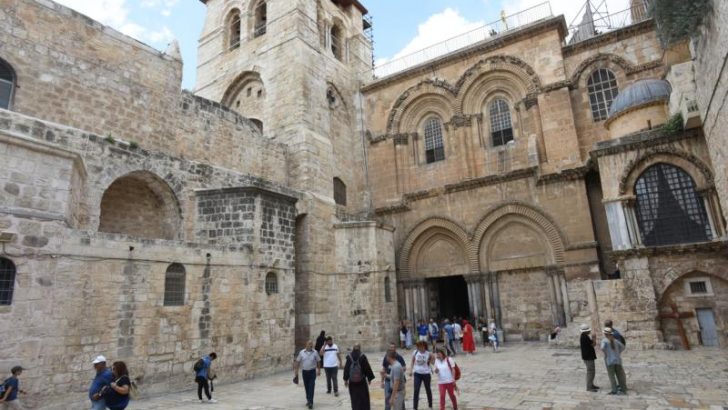Michael Kelly reflects on a notable visit to a “special place of devotion and pilgrimage” in the heart of Jerusalem
During a recent visit to Jerusalem, I was blessed to make a pilgrimage to the Church of the Holy Sepulchre. It is a place of remarkable spiritual intensity that houses some of the holiest sites in Christianity.
In the small confined space in the heart of the old city of Jerusalem, one can visit the site where the tradition holds that Christ was crucified and died – Golgotha (also known as Calvary). Just a short stroll inside the same complex is the site where Christians have believed from earliest time that Christ was laid in the tomb and rose from the dead on Easter Sunday.
It is a special place of devotion and pilgrimage and one can sense that even the most sceptical of visitors are moved by the surroundings. The church is soon to undergo extensive renovations – in fact, during my visit the scaffolding was already being erected.
The restoration work was necessitated after the Israeli authorities were forced to close the building down last year over health and safety fears. In truth, the work has been needed for decades. But a complex ‘status quo’ agreement reached in the 19th Century has delayed progress. Authority for the running of the Church is shared between the Greek Orthodox, Armenian Apostolic and Catholic Churches. The Coptic Orthodox, the Ethiopian Orthodox and the Syriac Orthodox Churches also have responsibility for some shrines within the building.
Potent symbol
Over the years, the various communities have found it virtually impossible to agree on renovations, with each side jealously guarding their prerogative.
The most potent symbol of this is the so-called ‘immovable ladder’ perched on the façade of the church leading up to a window. First placed there in the 18th century, the ladder is referred to as immovable due to an understanding that none of the six Churches may move, rearrange, or alter any property without the consent of the other five.
However, the fact that the church is now in such a bad state of repair and, in fact, at risk of crumbling in parts, has led to a sensible agreement between the various custodians of the shrine to permit remedial work to commence.
Funded jointly, with a generous donation from the King of Jordan, the meticulous work of stabilising the structure has finally begun.
Centuries of squabbling – sometimes violent – amongst monks charged with looking after the holiest sites in Christianity is a scandal, but it’s also a very human story of familial conflict.
Persecuted Christians: We’ve become depressingly used to hearing reports of Christian persecution from all parts of the world. While not murderous in nature, a British court case provides distressing news this week.
Four colleagues reportedly tied a Catholic boy to a cross and hung him from a wall as part of a sustained campaign of persecution.
While the boy, who cannot be named, was hanging on the crucifix the group drew crosses and phallic symbols on him with permanent marker, which took days to scrubs off and left his skin damaged.
Andrew Addison, 30, Joseph Rose, 21, Christopher Jackson, 21 and Alex Puchir, 37, have all been charged with putting a person in fear of violence by harassment and religiously aggravated assault.
The four men are from a shopfitting company in Selby, North Yorkshire, where the boy was an apprentice.
Prosecuting, Austin Newman told York Crown Court: “The crosses in particular were an indication of the hostility towards [the boy] based on his religious observance.”
One would have to wonder to what extent the fact that it’s ‘open season’ on criticising and mocking Catholics in the media, creates a culture where such vile persecution of people based on their faith in a self-described tolerant society can happen.
Holding the key: For almost 800 years, the keys to the church have been held by a local Muslim family. Every morning, a Muslim man, the only person with permission to hold the keys, unlocks and opens the door to the Church. This avoids any potential conflict between the Christian communities who are custodians of the holy places.


 Michael Kelly
Michael Kelly Church of the Holy Sepulchre in Jerusalem. Photo credit: CNS
Church of the Holy Sepulchre in Jerusalem. Photo credit: CNS 